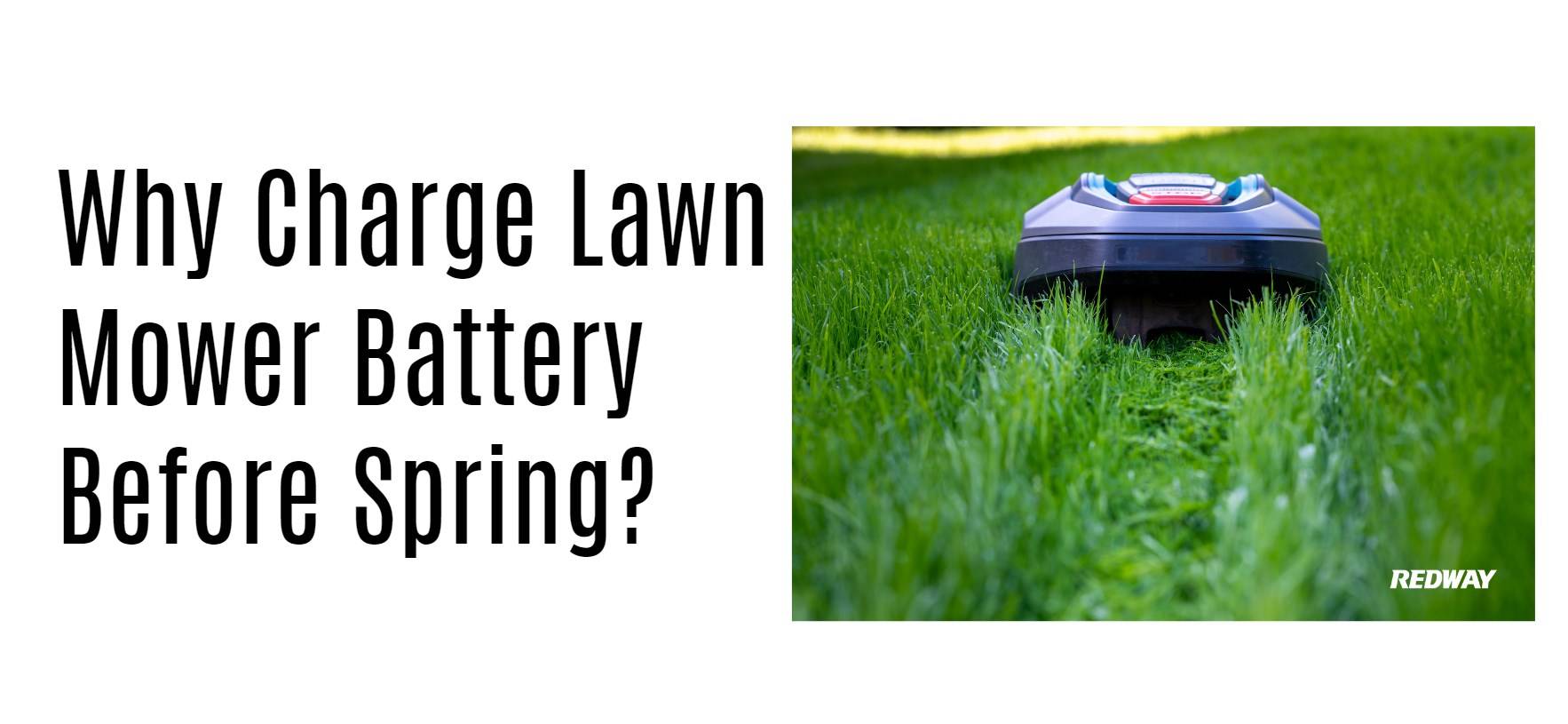
Blog
Why You Should Charge Your Lawn Mower Battery Before Spring

Charging your lawn mower battery before spring is essential to ensure reliable performance when mowing season arrives. During winter, batteries can lose charge due to self-discharge, leading to potential starting issues. Regularly charging and maintaining your battery helps prolong its lifespan and ensures your mower is ready for use.
What happens to lawn mower batteries during winter?
During winter, lawn mower batteries, especially lead-acid types, experience self-discharge, where they lose charge even when not in use. This process can lead to:
- Decreased Capacity: If left uncharged, the battery may not hold enough power to start the mower.
- Sulfation: A condition where lead sulfate crystals form on the battery plates, reducing efficiency and lifespan.
Chart: Self-Discharge Rates of Different Batteries
| Battery Type | Self-Discharge Rate (%) per Month |
|---|---|
| Lead-Acid | 3 – 5 |
| Lithium-Ion | 1 – 2 |
Why is charging your lawn mower battery important before spring?
Charging your lawn mower battery before spring is crucial for several reasons:
- Ensures Reliability: A fully charged battery increases the chances of a successful start after months of inactivity.
- Prevents Damage: Regular charging helps avoid sulfation and other degradation issues that can arise from prolonged discharge.
- Extends Lifespan: Keeping the battery charged maintains its health and efficiency over time.
Chart: Benefits of Pre-Spring Charging
| Benefit | Description |
|---|---|
| Reliability | Ensures the mower starts without issues |
| Damage Prevention | Reduces risks of sulfation and other damages |
| Longevity | Prolongs overall battery life |
How can self-discharge affect battery performance?
Self-discharge affects battery performance by gradually reducing its ability to hold a charge:
- Lead-Acid Batteries: Lose about 3% to 5% of their charge monthly, which can lead to complete discharge if not monitored.
- Lithium-Ion Batteries: Have a lower self-discharge rate (around 1% to 2%), but still require attention.
If a lawn mower battery is allowed to fully discharge during winter, it may fail to start in spring, necessitating a replacement.
Chart: Impact of Self-Discharge on Performance
| Discharge Level | Effect on Performance |
|---|---|
| Fully Charged | Optimal performance |
| Partially Discharged | Reduced capacity and efficiency |
| Fully Discharged | Potential permanent damage |
What are the best practices for charging a lawn mower battery?
To ensure effective charging:
- Use the Correct Charger: Always use a charger designed for your specific type of battery (lead-acid or lithium-ion).
- Follow Manufacturer Guidelines: Adhere to recommended voltage and amp settings.
- Monitor Charging Time: Avoid overcharging; disconnect once fully charged.
Chart: Recommended Charging Practices
| Practice | Description |
|---|---|
| Use Appropriate Charger | Match charger type with battery type |
| Follow Guidelines | Adhere to voltage and amp recommendations |
| Monitor Time | Disconnect after full charge |
How can you maintain your lawn mower battery throughout the year?
Regular maintenance is key to prolonging the life of your lawn mower battery:
- Check Water Levels: For lead-acid batteries, ensure electrolyte levels are adequate; top off with distilled water if necessary.
- Clean Terminals: Keep terminals free from corrosion using a mixture of baking soda and water.
- Charge Regularly: During non-use periods, charge the battery every few weeks.
Chart: Year-Round Maintenance Schedule
| Maintenance Task | Frequency |
|---|---|
| Check Water Levels | Monthly |
| Clean Terminals | Every Few Months |
| Charge Regularly | Every Few Weeks |
What common issues should you watch for in lawn mower batteries?
Common issues include:
- Corrosion on Terminals: Can lead to poor connections and starting problems.
- Weak or Dead Battery: May require testing if the mower fails to start.
- Sulfation Build-Up: Especially in lead-acid batteries that have been left discharged.
Chart: Common Battery Issues and Solutions
| Issue | Description | Solution |
|---|---|---|
| Corroded Terminals | Poor connections causing starting issues | Clean terminals with baking soda |
| Weak Battery | Fails to hold charge | Test and replace if necessary |
| Sulfation | Reduced efficiency due to lead sulfate buildup | Regular charging prevents buildup |
How can you troubleshoot problems with your lawn mower battery?
To troubleshoot effectively:
- Check Connections: Ensure all terminals are clean and securely attached.
- Test Voltage Levels: Use a multimeter to check if the voltage is within acceptable ranges (12.6V or higher for fully charged).
- Inspect for Damage: Look for physical signs of wear or damage on the battery casing.
Chart: Troubleshooting Steps
| Step | Action |
|---|---|
| Check Connections | Ensure tight and clean connections |
| Test Voltage | Use multimeter for accurate readings |
| Inspect Physical Condition | Look for cracks or leaks |
Industrial News
As electric mowers gain popularity due to their eco-friendliness, manufacturers are focusing on improving battery technology and maintenance practices. Recent innovations include smart chargers that optimize charging cycles based on usage patterns, helping users maintain their batteries more effectively throughout seasonal changes.
Redway Power Insight
“Charging your lawn mower battery before spring is not just a good practice; it’s essential for ensuring reliable performance,” states an expert from Redway Power. “By following proper maintenance routines and understanding how batteries behave during off-seasons, users can significantly extend their lifespan and enjoy hassle-free mowing.”



